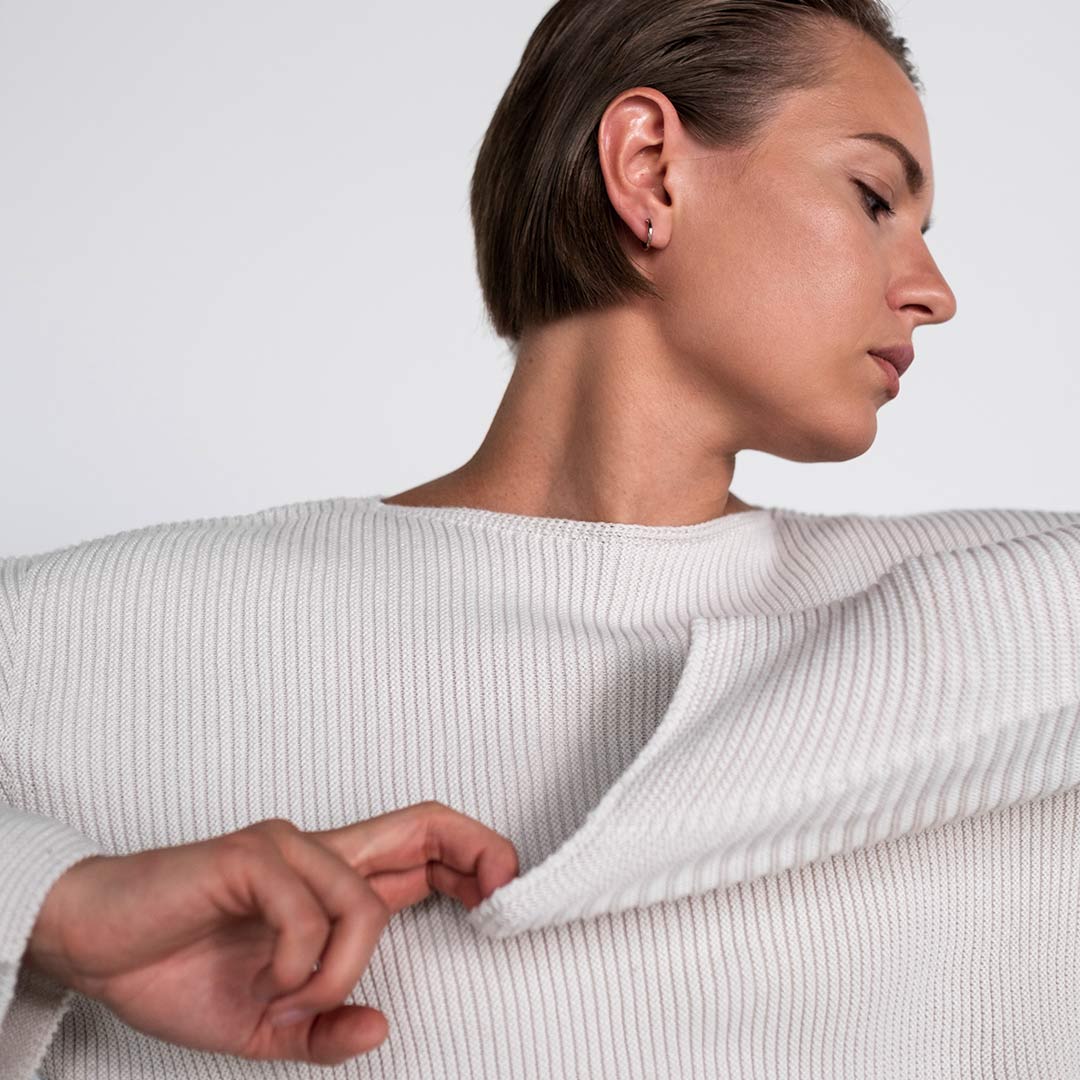Imagine a crisp, cool day, and you're gearing up for a hike in the great outdoors. You want to make sure you're warm, comfortable, and stylish. The woolly showdown between merino wool and traditional wool can be challenging but don't worry. This article got you covered!
Let’s take you on a woolly adventure that will leave you confident and excited to make the perfect choice for your needs. We'll explore the unique properties and benefits of both merino wool and traditional wool, providing the information you need to choose the perfect wool garment for any occasion.
Let's start with the basics. First, you'll learn all about the origins of merino wool and traditional wool and their properties and uses in the fashion and outdoor industries. Then, we'll show you how both materials can be stylish and comfortable, ensuring you feel confident and fashionable while staying warm and cosy.
What is Merino Wool?
Merino wool is a type of wool that comes from the Merino breed of sheep. These sheep are bred specifically for their wool, considered one of the finest and softest types of wool available. In addition, Merino wool is known for its excellent moisture-wicking properties, which make it ideal for activewear, such as hiking and running clothes.
Merino wool is also naturally antibacterial due to its lanolin content, so it doesn't need to be washed as often as other materials. It's also hypoallergenic and won't irritate sensitive skin.
What is Traditional Wool?
Traditional wool comes from various breeds of sheep, such as the Romney, Corriedale, and Dorset. It has been used for centuries to create warm, durable clothing, such as sweaters, socks, and blankets. It can be made into different textures, from dense and heavy to soft and fluffy. It's also an excellent choice for knitting or crocheting projects, as it holds its shape well.

Merino Wool vs. Traditional Wool: Key Differences
When it comes to wool, there are two heavyweights in the ring: merino wool and traditional wool. While they may seem similar at first glance, critical differences between the two materials can affect your clothing choices.
Fibre Diameter
One of the main differences between merino wool and traditional wool is the diameter of the individual fibres. Merino wool fibres are much finer than traditional wool fibres, with an average diameter of around 20 microns (µm) compared to 30-40 µm for traditional wool.
The finer merino wool fibres make it feel softer and less itchy against the skin than traditional wool. It also makes it easier to spin into finer yarns for more delicate projects.
Softness and Comfort
Another significant difference between the two types of wool is how they feel against the skin. Merino wool is known for its exceptional softness and comfort, making it ideal for base layers and underwear use. Traditional wool, on the other hand, can sometimes feel itchy or scratchy against the skin.
Merino wool's softness and comfort make it a great choice for people with sensitive skin or those who are looking for a more luxurious feel. However, some people prefer the coarser texture of traditional wool for more rugged clothing items.
Moisture Wicking Properties
Merino wool is also known for its excellent moisture-wicking properties. It can absorb up to 30% of its weight in water without feeling wet, making it ideal for clothing designed for active pursuits. Unfortunately, while still absorbent, traditional wool doesn't wick moisture away from the skin as effectively as Merino wool.
The moisture-wicking properties of merino wool make it a great choice for outdoor activities or sports, as it can keep the wearer dry and comfortable. Traditional wool is better suited for warm, dry climates where moisture isn't a significant concern.
Durability and Longevity
Traditional wool is known for its durability and longevity, and it can last many years with proper care. Merino wool is also durable but may not last as long as traditional wool garments.
Merino wool's durability can be improved by blending it with other materials, such as nylon or polyester. This combination creates a garment that is both durable and comfortable.
Insulation
Both merino and traditional wool are excellent insulators, trapping warm air close to the skin to keep the wearer warm in cold weather. However, merino wool is also a good insulator in warm weather, helping to regulate body temperature and prevent overheating.
Merino wool's insulation properties make it an excellent choice for layering in cold weather. Its ability to regulate body temperature also makes it an ideal choice for clothing in changing weather conditions.
Benefits of Merino Wool
Merino wool has gained popularity recently due to its unique properties and benefits. From temperature regulation to sustainability, this versatile material has much to offer for those seeking comfort and style in their clothing choices.
Temperature Regulation
One of the main benefits of merino wool is its ability to regulate body temperature. As a result, it can keep you warm in cold weather and cool in warm weather, making it ideal for year-round wear.
Merino wool's ability to regulate body temperature makes it an excellent choice for clothing items worn in varying weather conditions, such as base layers or outerwear. It can keep the wearer comfortable and dry, no matter the temperature.
Odour Resistance
Merino wool is naturally odour-resistant, thanks to the lanolin it contains. This means it stays fresher for longer, even after multiple wears, and doesn't require as much washing as other materials.
Merino wool's odour resistance makes it ideal for activewear, such as hiking or running clothes. In addition, it can be worn for multiple days without unpleasant odours, making it great for extended trips or outdoor activities.
Sustainability
Merino wool is a sustainable material, as it is renewable and biodegradable. In addition, the sheep that produce the wool can also graze on natural pastures, reducing the environmental impact of their farming.
Merino wool's sustainability makes it an excellent choice for eco-conscious consumers who want to reduce their environmental impact. It's a renewable material that can be recycled or composted at the end of its lifecycle.
Versatility
Merino wool is incredibly versatile and can be used in various clothing, from base layers and underwear to sweaters and outerwear. It's also suitable for both casual and athletic wear.
Merino wool's versatility makes it an excellent choice for consumers who want to invest in a material that can be used in many different ways. It's suitable for various occasions and can be dressed up or down depending on the situation.
Benefits of Traditional Wool
When it comes to choosing a warm and durable material, traditional wool is an excellent option. This material has been used for centuries, known for its resilience and ability to keep the wearer warm even in the harshest of conditions.
Durability
Traditional wool is durable and can withstand wear and tear over time. It can last for years with proper care, making it a great investment piece.
Traditional wool's durability makes it an excellent choice for consumers who want to invest in a long-lasting material that can be worn for many years. In addition, it's a perfect choice for classic, timeless pieces that will never go out of style.
Flame Resistance
Wool is naturally flame-resistant and won't easily catch fire or melt. This makes traditional wool clothing safer for cooking or working with fire.
Traditional wool's flame resistance makes it an ideal choice for clothing items that may be exposed to heat or flames. It's also an excellent choice for those who prioritise safety in their clothing choices.
Water Resistance
Traditional wool is naturally water-resistant, thanks to its lanolin content, which helps to repel water and keep the wearer dry.
Traditional wool's water resistance makes it an excellent choice for outdoor activities in wet conditions. Moreover, it can keep the wearer dry and comfortable, even in rainy weather.
Warmth
Traditional wool is excellent at trapping warm air close to the skin, making it a great choice for cold-weather clothing. It's often used to make sweaters, socks, and blankets.
Traditional wool's warmth makes it an ideal choice for consumers who live in colder climates or need warm clothing for outdoor activities. It can keep the wearer warm and comfortable in even the most freezing weather.
How to Care for Merino Wool and Traditional Wool
Both wool types require special care to maintain their properties and longevity. It's essential to read the care instructions on each garment before washing, as different wool blends may have additional requirements. In general, fleece should be hand-washed or machine washed on a delicate cycle using a wool-specific detergent. It should be dried flat and never put in the dryer, as this can cause shrinkage and damage to the wool fibres.
It's also good to store wool clothing items in a cool, dry place, away from direct sunlight or heat sources. Moths can be a problem for wool clothing, so keeping them in an airtight container or using mothballs or cedar blocks to repel insects is essential.
Which One Should You Choose?
The choice between merino wool and traditional wool ultimately depends on your needs and preferences. For example, Merino wool is a great choice if you're looking for a soft, comfortable material with excellent moisture-wicking properties. On the other hand, traditional wool may be the better option if you're looking for a durable, long-lasting material suitable for cold-weather clothing.
It's essential to consider your lifestyle, climate, and the garment's intended use when deciding between the two types of wool. Both merino and traditional wool have unique benefits and properties that make them suitable for different clothing items and purposes.
Wrap Yourself in Comfort and Durability
In conclusion, merino and traditional wool have unique properties and benefits, making them suitable for different clothing items and purposes. While merino wool is softer and more moisture-wicking, traditional wool is more durable and better at trapping warm air. By understanding the differences between these two types of wool, you can make an informed decision when selecting the perfect wool garment for your needs.
Remember always to read the care instructions on your wool garments and store them properly to maintain their properties and longevity. Whether you choose merino wool or traditional wool, both are excellent choices for creating warm, comfortable, and stylish clothing items that will last for years.


